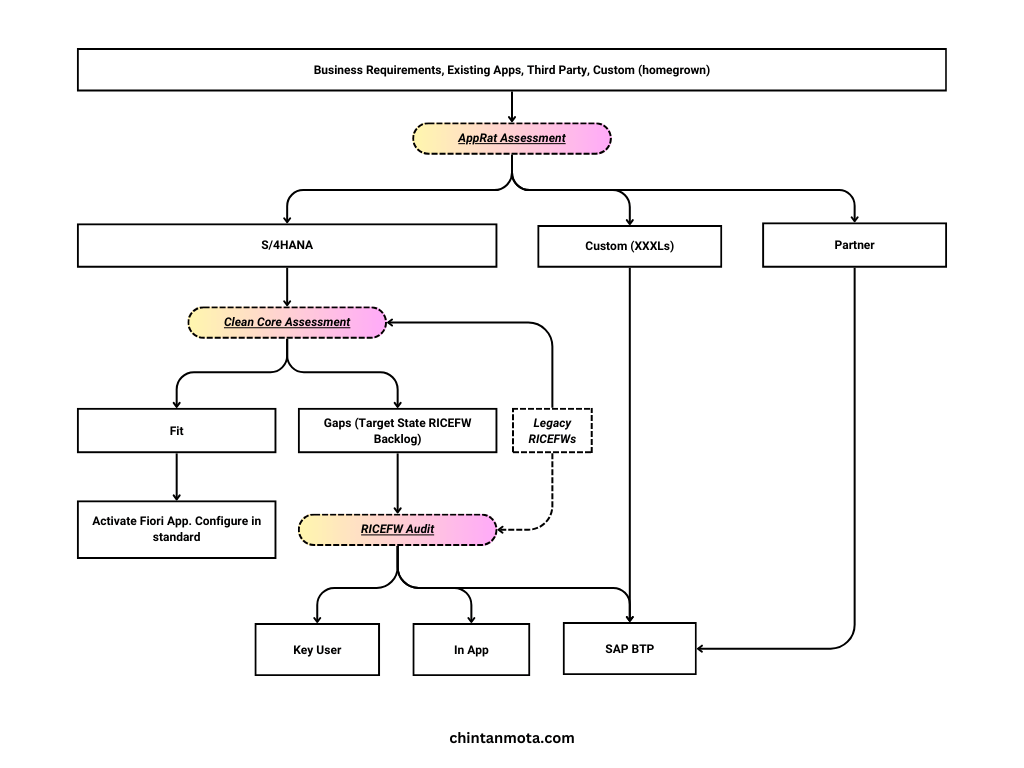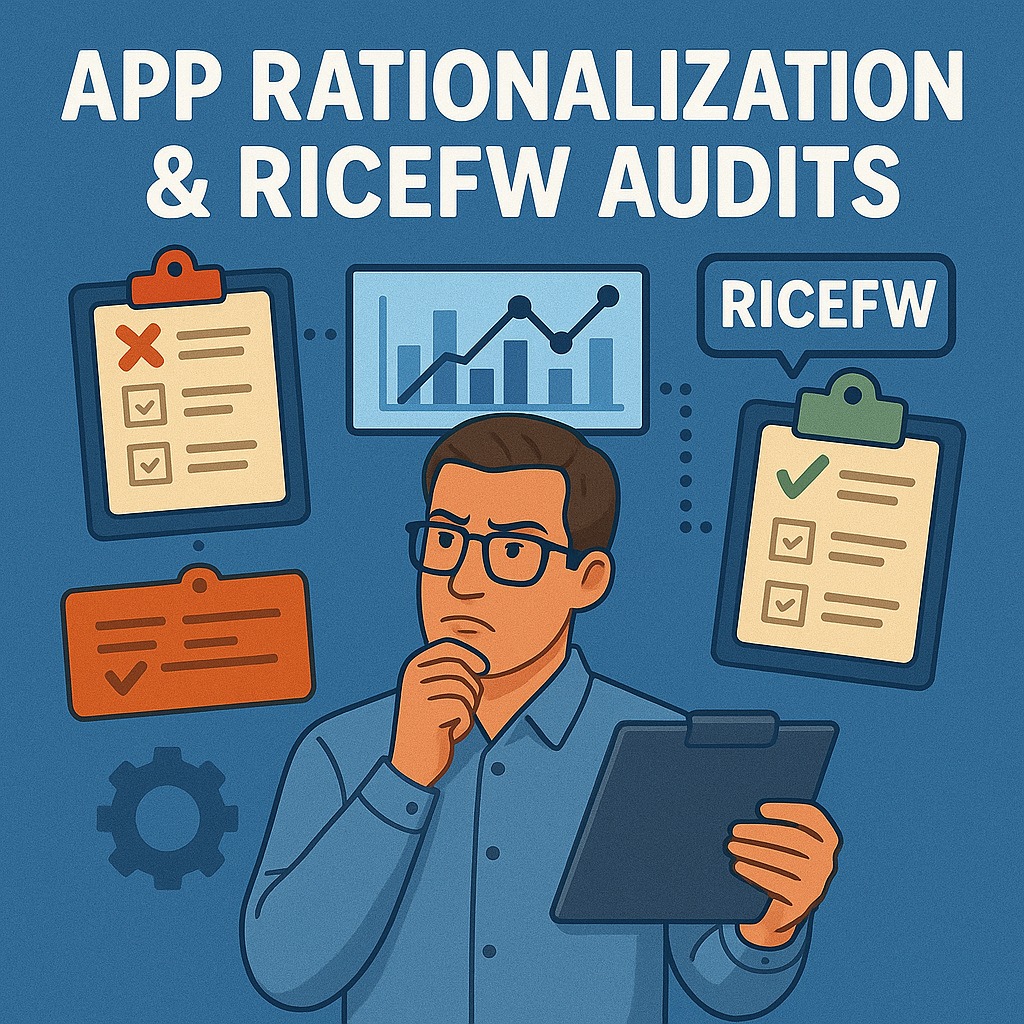In the ever-evolving SAP and ERP technology landscape, businesses constantly struggle with legacy applications, custom developments, and technical debt. This is where structured audits—App Rationalization, Clean Core, and RICEFW audits can make a difference. Especially when making one of the major decisions to move from ECC on premise to S/4HANA. These assessments help organizations streamline their IT footprint, reduce redundant applications, and identify opportunities to leverage SAP Business Technology Platform (BTP) effectively. Let’s dive into how each of these audits plays a role in uncovering BTP use cases.

1. App Rationalization Audit – Identifying What to Keep, Replace, or Retire
Every organization has a mix of business applications—SAP standard apps, third-party solutions, and custom homegrown applications. Over time, this landscape becomes cluttered, leading to inefficiencies.
An App Rationalization (AppRat) Audit helps businesses evaluate their existing applications based on business fit, technical sustainability, and strategic alignment with S/4HANA. This process typically results in three outcomes:
- Fit – Applications that align with SAP standard functionalities can be activated or configured within S/4HANA.
- Replace – Legacy apps that are no longer relevant or supported should be replaced with modern SAP, third party or SAP partner solutions solutions.
- Custom – Unique and business critical applications that provide business differentiation but don’t fit within the core ERP S/4HANA could be rebuilt as BTP applications and extensions.
Example Use Case: A company with a custom-built HR case management tool could replace it with a modernized, Fiori-based SAP BTP application, reducing ECC dependency while retaining key functionalities.
2. Clean Core Audit – Keeping the Digital Core Clean
With S/4HANA, clean core is a key principle, emphasizing minimal customizations within the ERP system. A Clean Core Audit assesses the level of customization in an SAP system and helps identify areas that need optimization. This audit ensures that core ERP processes remain intact while pushing custom developments to BTP.
Key steps in a Clean Core Audit include:
- Identifying custom code that can be retired or replaced with standard SAP functionalities.
- Evaluating which extensions are critical and should be moved to SAP BTP as side-by-side extensions.
- Ensuring that configurations follow SAP’s Keep the Core Clean best practices.
Example Use Case: A company using heavily customized invoice approval workflows within ECC can migrate them to SAP Workflow Management on BTP, allowing flexibility without impacting the core system.
3. RICEFW Audit – Optimizing Custom Development Backlogs
RICEFW (Reports, Interfaces, Conversions, Enhancements, Forms, and Workflows) objects often make up the bulk of an SAP implementation’s technical debt. A RICEFW Audit classifies these objects into:
- Standard SAP functionalities (to be retained or optimized)
- Redundant or obsolete objects (to be eliminated)
- Candidates for BTP extension
Example Use Cases: Old SAP GUI-based workflows can be rebuilt as BTP-based mobile-friendly workflows, improving user experience and efficiency.
How These Audits Drive BTP Adoption
By performing these audits systematically, organizations can:
- Reduce unnecessary system complexity.
- Improve governance by keeping the core ERP clean.
- Shift non-core functionalities to BTP for better scalability, security, and innovation.
- Accelerate S/4HANA migration by modernizing outdated custom developments.
If you’re planning your SAP transformation journey, leveraging these audits can provide a roadmap for strategic BTP adoption, ensuring that your enterprise stays agile, efficient, and future-ready.
Are you currently working on a SAP modernization or S/4HANA transformation project? What challenges are you facing in rationalizing apps, keeping the core clean, or managing RICEFWs? Contact us to learn how we can create value and help you maximize and improve ROI from SAP BTP.
